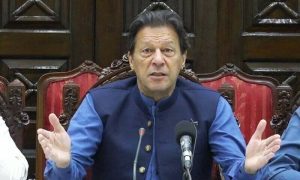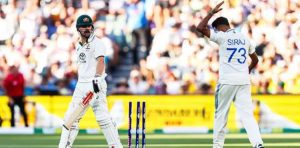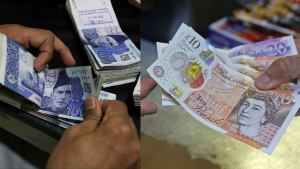[ad_1]
For years, prosecutors debated, fought and even, in at least two cases, resigned over the fate of the Manhattan district attorney’s investigation into Donald J. Trump. Some legal experts predicted it would be the downfall of the district attorney, Alvin L. Bragg.
But on Thursday, a jury swiftly and decisively vindicated the risky strategy that Mr. Bragg employed to bring 34 felony counts against the former president.
Prosecutors were helped by state election law, two judges who allowed their novel legal theory to proceed and their ability to make the most of a high-risk witness, Mr. Trump’s former fixer, Michael D. Cohen.
The jury’s verdict — guilty on all 34 felony counts — represented a landmark victory for Mr. Bragg, who claimed a place in history as the first prosecutor to indict, prosecute and convict a former U.S. president.
“I did my job,” he said at a news conference after the verdict. “Our job is to follow the facts without fear or favor and that’s what we did here.”
Prosecutors had to persuade jurors that Mr. Trump had falsified records to cover up a sex scandal that threatened to derail his 2016 presidential campaign. They faced an uphill battle, taking jurors on a complex and winding decade-long journey from a Lake Tahoe, Nev., celebrity golf tournament all the way to the Oval Office.
They were buoyed by the fine print of New York State law. Prosecutors needed to show only that Mr. Trump “caused” the business records to be false, rather than orchestrating the scheme or personally falsifying them.
But to make the case that Mr. Trump’s actions rose to the level of a felony, they also had to show that Mr. Trump falsified the records to conceal a second crime. This element of the case discouraged Mr. Bragg’s predecessor, Cyrus R. Vance Jr., from moving forward. But Mr. Bragg, a career prosecutor and something of a legal wonk, pushed his prosecutors to scour the penal code for a workable theory.
After months of internal deliberations, Mr. Bragg settled on an argument that Mr. Trump had violated an obscure state election law. This novel and untested theory — applying a state election law to a federal campaign — became fodder for Mr. Trump’s lawyers, who argued that the prosecutors’ case was flimsy at best. Two judges ruled that the prosecutors had legal grounds to pursue the case, but it will also have to withstand an appeal, which Mr. Trump has already indicated he will file.
Over the course of six weeks and the testimony of 20 witnesses, prosecutors wove a sprawling yet granular story of election interference and falsified business records, convincing 12 New Yorkers beyond a reasonable doubt that Mr. Trump was guilty of felony crimes. They called many of Mr. Trump’s former employees and allies who, as the prosecutor Joshua Steinglass said in his closing argument, had no motive to fabricate their testimony. If anything, he added, they had an incentive to skew it to help the former president.
Their testimony, coupled with thousands of pages of documentary evidence and Mr. Trump’s own words, allowed prosecutors to bolster their case before the jurors heard from two key witnesses whose credibility would be aggressively attacked: Mr. Cohen and the porn actress Stormy Daniels.
“There is, literally, a mountain of evidence of corroborating testimony that tends to connect the defendant to the crime,” Mr. Steinglass said during his closing argument on Tuesday. “It’s difficult to conceive of a case with more corroboration than this one.”
Mr. Bragg’s prosecutors kicked off the testimony on April 22 by calling David Pecker, the former publisher of The National Enquirer and a friend of Mr. Trump, to the witness stand. Mr. Pecker spent days testifying to the bigger picture prosecutors were trying to convey: Mr. Trump’s scheme to influence the outcome of the 2016 election.
Prosecutors described for the jurors the now infamous 2015 meeting in Trump Tower where Mr. Trump and members of his inner circle devised a plot to protect his first presidential campaign. Jurors heard compelling testimony from Mr. Pecker about the scandalous stories he purchased and buried to prevent embarrassment to the Trump campaign, a practice prosecutors referred to as “catch-and-kill.”
While the jurors heard that practice was common in the supermarket tabloid world, prosecutors elicited testimony from Mr. Pecker about how his scheme with Mr. Trump — designed to aid his campaign and influence the election — was extraordinary.
From there, prosecutors methodically revealed the crux of their case: the $130,000 hush-money payment from Mr. Cohen to Ms. Daniels to cover up a sex scandal and the reimbursements to Mr. Cohen that resulted in the fake records.
Hope Hicks, Mr. Trump’s former campaign spokeswoman, described the panic in the Trump campaign just before the 2016 election, following the release of the “Access Hollywood” tape, in which Mr. Trump was caught speaking in vulgar terms about women. Keith Davidson, Ms. Daniels’s former lawyer, described how he capitalized on that concern and negotiated with Mr. Cohen to get the hush-money deal for Ms. Daniels. And Jeffrey McConney, the former Trump Organization controller and longtime loyal employee of Mr. Trump, testified about the reimbursement payments to Mr. Cohen.
Other former and current employees followed suit, slowly explained the accounting minutiae and the path of Mr. Cohen’s reimbursements with checks making their way to Mr. Trump in the Oval Office.
Prosecutors corroborated weeks of testimony with documents, recordings, emails, social media posts, phone records and text messages. Notably, jurors saw — several times — a handwritten note from the former Trump Organization chief financial officer Allen H. Weisselberg reflecting the details of the repayment plan to Mr. Cohen (which Mr. Steinglass referred to as a “smoking gun”), and heard conversations that Mr. Cohen recorded that demonstrated Mr. Trump’s knowledge of the hush-money deal.
By reading passages of Mr. Trump’s books, prosecutors depicted the former president as a frugal micromanager who always questioned his invoices, distrusted his employees and had a penchant for revenge. Because Mr. Trump decided not to take the stand in his own defense, this image was never rebutted.
By the time Ms. Daniels and Mr. Cohen were called to the witness stand, they needed only to fill in the gaps.
Ms. Daniels painted a vivid picture of what Mr. Trump was trying to hide from voters: a consensual yet uncomfortable sexual encounter in 2006 in a Lake Tahoe, Nev., hotel room, where Ms. Daniels said there was a power “imbalance” between her and Mr. Trump.
Prosecutors portrayed Mr. Cohen as “the ultimate insider” to Mr. Trump and a “tour guide through the physical evidence.” Mr. Cohen described Mr. Trump’s directive to pay off Ms. Daniels (“Just do it,” Mr. Cohen recalled Mr. Trump’s saying) and their meeting in the Oval Office where Mr. Trump confirmed the plan to reimburse him.
Prosecutors were also helped by Mr. Trump’s lawyers’ decision to call to the stand Robert J. Costello, once Mr. Cohen’s informal legal adviser. One of the defense’s two witnesses, Mr. Costello was uneven and irascible on the stand. Outside the presence of the jury, the judge called him “contemptuous.”
In an intense cross-examination, prosecutors portrayed Mr. Costello as an agent of Mr. Trump who tried to prevent Mr. Cohen from cooperating with law enforcement.
It effectively closed the loop on prosecutors’ narrative of Mr. Trump’s conduct. “The name of the game was concealment,” Mr. Steinglass said in his closing argument, “and all roads lead inescapably to the man who benefited most, the defendant, former President Donald Trump.”
[ad_2]
Source link






